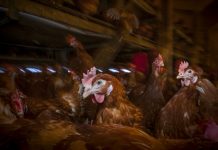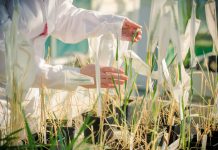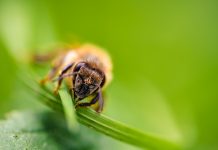The University of Illinois team have figured out which gene controls protein content in soybeans – a breakthrough for global food security
Soybeans, globally traded, are the largest source of animal protein feed in the world.
Soybean is important to everyone, everywhere
Global soybean production has exploded over the last twenty years. But in the last ten, responding to increased demand from China and Europe for animal feed, these numbers have rocketed upwards. The worldwide appetite for meat, despite recent movements aiming to limit climate change, is only growing.
According to supply chain analysis, 85% of all soybean production is crushed into meal for animals – farmed fish, poultry, pigs and cattle – or vegetable oil.
The other 15% are sold as whole beans.
The demand means that more areas are destroyed to create new farming potential, generating greenhouse gases, harming local communities and risking local food supply. Three key areas where this expansion risks biodiversity are in Brazil, Argentina and Paraguay.
Globally, 20% of soybeans are grown in regions facing water stress – which risks depleting groundwater reserves. Indigenous groups also regularly lose land to commercial soybean farming operations, which has directly negative effects in severing ancient communities from their lands.
What if soybean became more protein-rich, naturally?
Now, Brian Diers, leading a team over decades, has potentially identified how to make soybeans more protein-rich.
Brian Diers, co-author of the study in The Plant Journal, explained: “Soybeans are around 40% protein, and this gene increases that about 2%. It doesn’t sound like a lot, but compared to any other seed-protein gene that’s been mapped for soybean, it’s at least double.”
In 1992, he was a graduate student, who published the first seed protein map for soybean. Now, he has discovered the gene that controls protein content for soybean. Over the years, students helped to look through several million base pairs of DNA via testing generations of plants.
Eventually, the gene list narrowed.
Diers further said: “It’s satisfying to make the journey from being an eager young grad student, all excited about this finding, to finally determining what the gene is. But if I go back to myself 30 years ago, I could never have imagined it would have taken this long. But better late than never.”
The gene was found in a surprising place
The gene, Glyma.20G85100, is actually without a known function – but closely related to “clock and circadian timing” genes. The team expected to find the gene involved in nitrogen fixation or nitrogren metabolism, which Diers describes as “something obvious” in relation to protein.
Co-author Matt Hudson, Professor of Bioinformatics in Crop Sciences, said: “It could be that the gene is involved in moving photosynthesis products into the seed or it could be some completely unrelated pathway. It’s weird, and we really don’t know.”
The protein-gene discovery could mark a turning point for food security, if it works to amplify protein in the crop globally.
Hudson further said: “If we could put the high protein form of the gene into commercially grown varieties, we would be looking at a significant increase in protein for livestock and humans worldwide as even a single percentage point increase in protein concentration would represent millions of tons of protein.
“That’s quite significant.”











